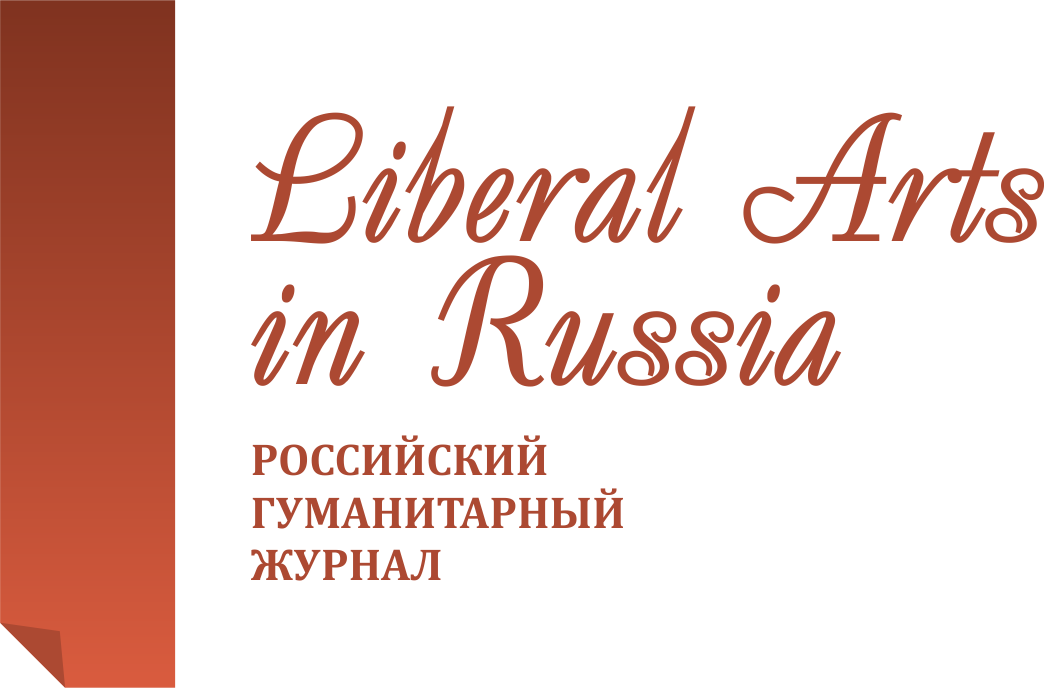Features of the syntactic organization of the text of the novel “Laurus” by E. Vodolazkin
Liberal Arts in Russia. 2022. Vol. 11. No. 1. Pp. 35-46.
Get the full text (Russian) Email: ahmed_atik@alsun.asu.edu.egAbstract
The article is devoted to the study of the syntactic structure of the novel “Lavr” by E. G. Vodolazkin and the identification of the role of the syntactic organization of the text as an element of the author’s achievement of his artistic conception. It was revealed that the syntactic structure of the novel is closely related to the concept of time, built in the work by the writer. E. G. Vodolazkin uses the method of displacement of temporary layers, and the syntactic organization of the text is one of the tools with which this method is implemented. If the narration goes in the Old Russian time layer, then the syntax is characterized by simplicity, sentences are short, simple, or two-component complex, the main means of connecting sentences in the text are personal and possessive pronouns and compositional conjunctions. Punctuation-graphic design also corresponds to the author’s intention: dialogue and direct speech are not highlighted in the text, exclamation and question marks, quotation marks are practically not used. If there is a shift in temporary layers, then the syntax and punctuation-graphic design of the text are transformed: they become modern or close to modern. In addition, the syntactic organization of the text of the novel “Laurus” is important for the implementation of the category of expressiveness in it. The syntactic and punctuation-graphic techniques used by the author serve to externally reduce expression, to deliberately “humble” or “diminish”, but it goes into the inner plane. The author achieves the opposite effect: the text begins to sound more expressive. A large role in the perception of such a text is assigned to the reader, whose independence, and therefore perception awareness, increases. The conclusion is made about the innovative nature of the syntactic structure of the novel “Laurus” and about its significant role as a means of achieving by the author his artistic conception.
Keywords
- • syntax
- • syntactic organization
- • expressive syntax
- • parceling
- • dialogue
- • direct speech
- • Evgeny Vodolazkin
References
- Aleshina L. N., Zaitseva I. A., Torosyan A. S. Vestnik Moskovskogo gosudarstvennogo oblastnogo universiteta. Seriya: Russkaya filologiya. 2021. No. 1. Pp. 78-87. https://doi.org/10.18384/2310-7278-2021-1-78-87.
- Berdnikova O. A., Golitsyna T. N. Sbornik materialov nauchno-bogoslovskoi konferentsii kafedry filologii Moskovskoi dukhovnoi akademii "Tainstvo slova i obraza". Moscow: Mosk. dukh. akademiya, 2019. Pp. 243-253.
- Vodolazkin E. G. Lavr: roman [Laurus: novel]. Moscow: AST, 2020.
- Gumovskaya G. N. Prepodavatel' XXI vek. 2017. No. 3-2. Pp. 364-373.
- Ivanitskaya E. N. Istoricheskaya grammatika russkogo yazyka [Historical grammar of the Russian language]. Moscow: Direkt-Media, 2021.
- Kaldybekova Zh. A. Nauka i sovremennost'. 2015. No. 37-1. Pp. 103-107.
- Kalinina N. V. Yazyk kak material slovesnosti: XXIII Mezhdunarodnye nauchnye chteniya. Kazan': Buk, 2020. Pp. 126-135.
- Kalinina N. V. Aktual'nye problemy filologii XXI veka: Mat-ly Vtoroi Vserossiiskoi nauchno-prakticheskoi konferentsii. Naberezhnye Chelny: NGPU, 2018. Pp. 35-39.
- Kotova A. P. Kul'turnye kody russkoi literatury: Mat-ly Vserossiiskoi (s mezhdunarodnym uchastiem) ochno-zaochnoi nauchno-prakticheskoi konferentsii. Ufa: BGU, 2017. Pp. 229-238.
- Kochetova S. A. XIII Krymskie Mezhdunarodnye Mikhailovskie literaturno-onomasticheskie chteniya: Mat-ly konferentsii. Ed. A. V. Petrov. Simferopol': KFU, 2019. Pp. 102-107.
- Krivoshapova N. V. Izuchenie i prepodavanie russkogo yazyka v raznykh lingvokul'turnykh sredakh: Sb. st. Mezhdunarodnoi nauchno-prakticheskoi konferentsii. Ed. V. M. Shakleina. Moscow: RUDN, 2019. Pp. 374-381.
- Krylova M. N. Nauka segodnya: fakty, tendentsii, prognozy: Mat-ly mezhdunarodnoi nauchno-prakticheskoi konferentsii. Vologda: Marker, 2016. Pp. 145-146.
- Kuznetsov I. V., Maksimova N. V. Vestnik Cherepovetskogo gosudarstvennogo universiteta. 2021. No. 2(101). Pp. 59-70.
- Lobanova E. I., Suvorova N. V. Vestnik Ivanovskogo gosudarstvennogo universiteta. Seriya: Gumanitarnye nauki. 2021. No. 1. Pp. 22-27. https://doi.org/10.46726/N.2021.1.4.
- Maglii A. D. Vestnik Moskovskogo universiteta. Seriya 9: Filologiya. 2015. No. 1. Pp. 177-186.
- Mastepak T. G. Intertekstual'nost' khudozhestvennogo diskursa: Mat-ly Vserossiiskoi nauchnoi konferentsii. Ed. E. E. Zav'yalovoi. Astrakhan', AGU, 2018. Pp. 227-230.
- Popova T. G. Russkaya rech'. 2017. No. 5. Pp. 41-48.
- Sysueva D. D., Olekhnovich O. G. Aktual'nye voprosy sovremennoi meditsinskoi nauki i zdravookhraneniya: Mat-ly IV Mezhdunarodnoi nauchno-prakticheskoi konferentsii. Ekaterinburg: UGMU, 2019. Pp. 311-314.
- Shurinova N. S. Novoe proshloe/The New Past. 2016. No. 4. Pp. 99-110. https://doi.org/10.18522/2500-3224-2016-4-99-110.
- Assadi J. A., Hamad M. SAGE Open. 2014. Vol. 4. No. 2. https://doi.org/10.1177/2158244014531768.
